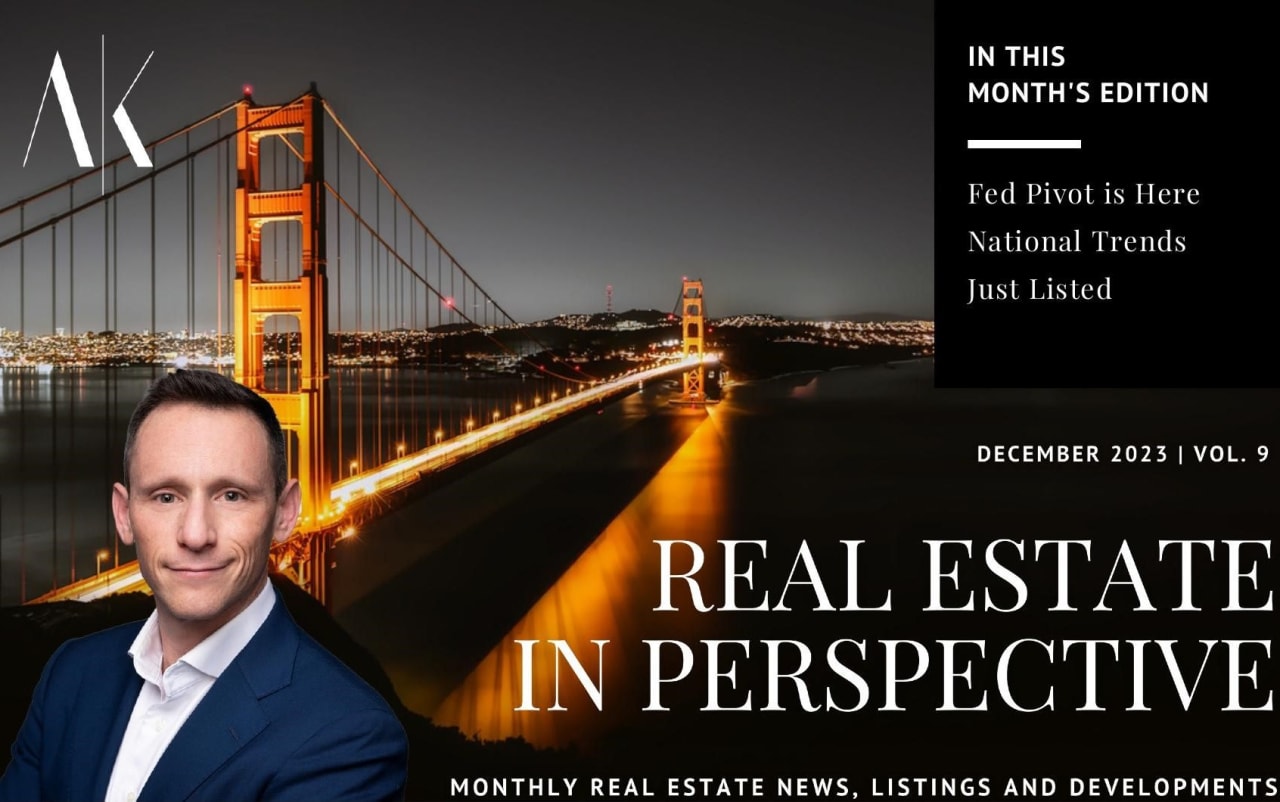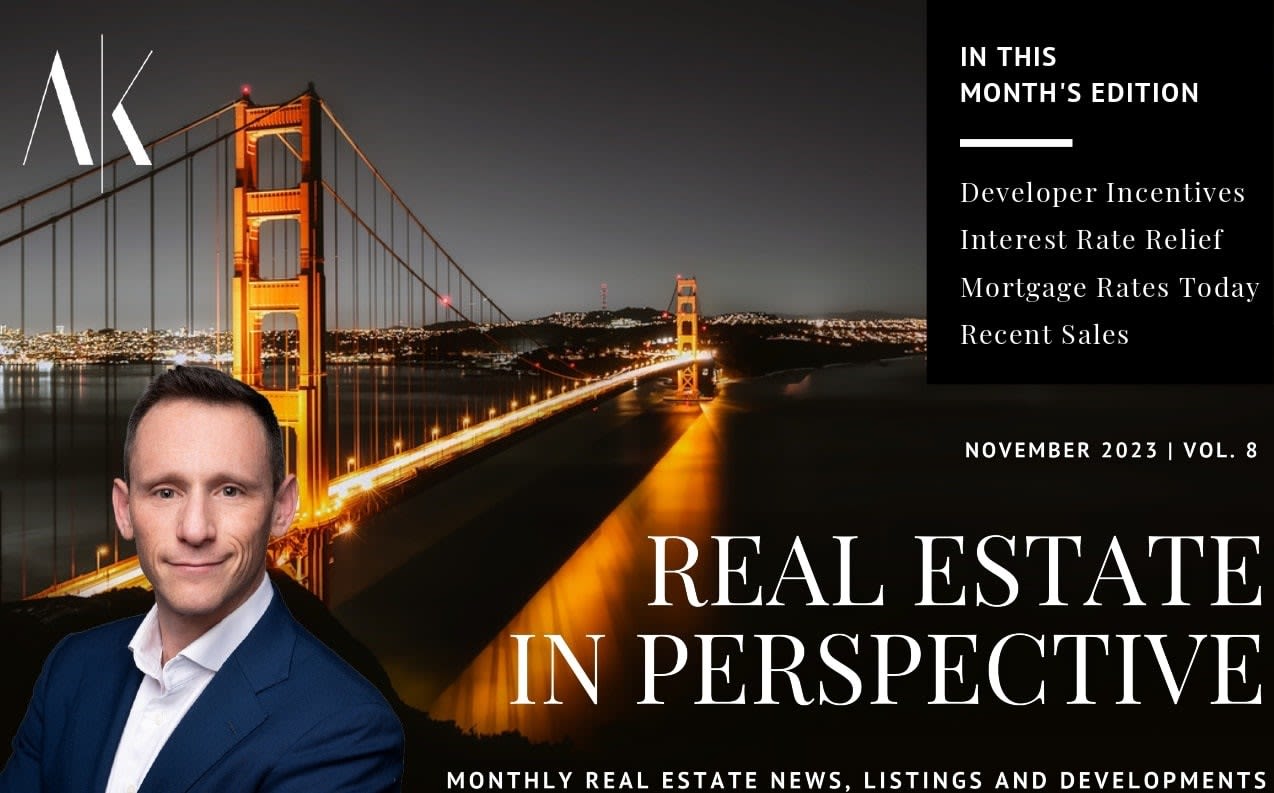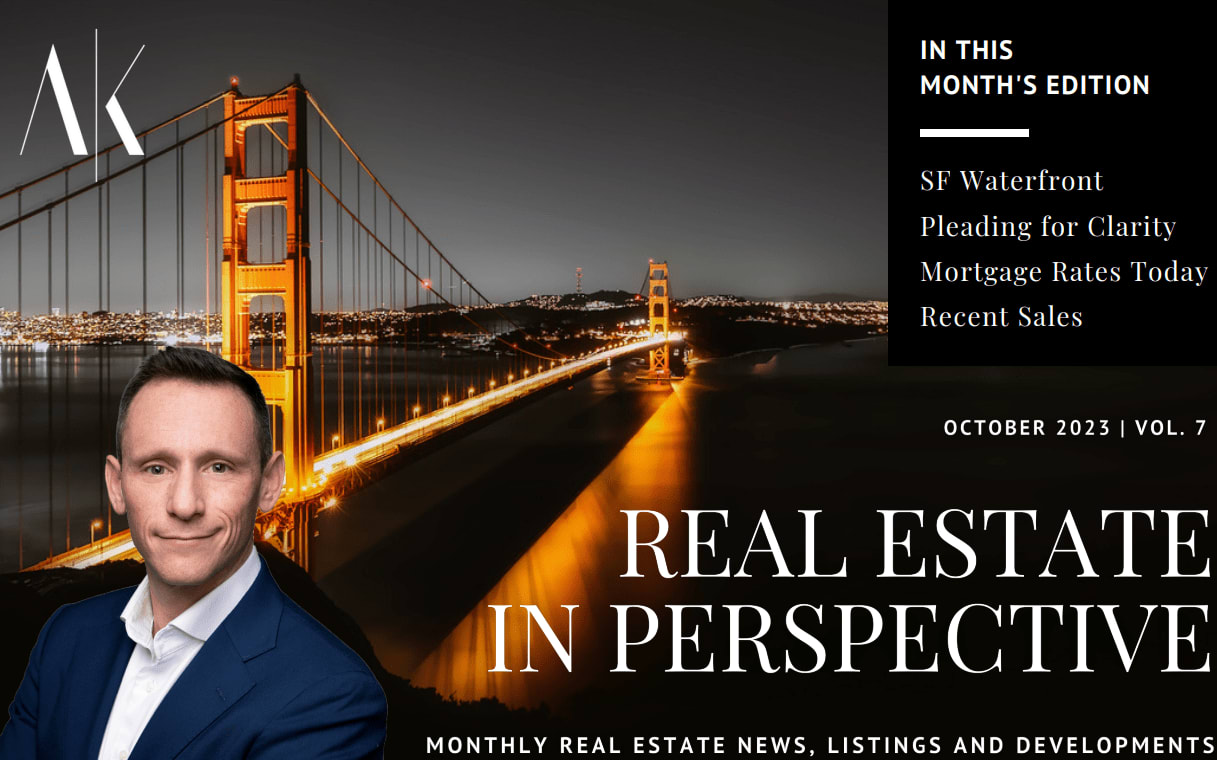The San Francisco real estate market has always been expensive, but housing prices and the trajectory of the San Francisco housing market have been and will continue to be affected by rising mortgage interest rates and inflation. To contextualize what these factors mean for you as a buyer or a seller, it’s necessary to look at what’s currently happening in the local real estate market.
The San Francisco Real Estate Market
Since the Fed implemented its first .75% interest rate hike in an attempt to cool inflation, the San Francisco real estate market has cooled in comparison to the months leading up to that rate hike.
Condominiums
| Jan to May 2022 | June to Sept 2022 | Change | |
|---|---|---|---|
| Median Price | $1,255,000 | $1,198,000 | - 4.5% |
| Median Price Per Foot | $1,142 | $1,066 | - 6.7% |
| Median Days on Market | 16 | 29 | + 81.3% |
Single Family Homes
| Jan to May 2022 | June to Sept 2022 | Change | |
|---|---|---|---|
| Median Price | $1,951,000 | $1,700,000 | - 12.9% |
| Median Price Per Foot | $1,155 | $1,047 | - 9.4% |
| Median Days on Market | 11 | 14 | + 81.3% |
Notably, notwithstanding depreciation in the Summer months, which is typically a cooler San Francisco real estate market than the Spring months, prices have increased for the entirety of 2022 compared to the same period last year.
Condominiums
| Jan to Sept 2021 | Jan to Sept 2022 | Change | |
|---|---|---|---|
| Median Price | $1,209,000 | $1,225,000 | + 1.3% |
| Median Price Per Foot | $1,096 | $1,108 | + 1.1% |
| Median Days on Market | 22 | 20 | - 9.1% |
Single Family Homes
| Jan to Sept 2021 | Jan to Sept 2022 | Change | |
|---|---|---|---|
| Median Price | $1,800,000 | $1,828,000 | + 1.6% |
| Median Price Per Foot | $1,060 | $1,102 | + 4.0% |
| Median Days on Market | 11 | 12 | + 9.1% |
San Francisco has long been one of the most expensive housing markets in one of, if not the, most expensive state in the country. Indeed, the median value of single family homes in San Francisco is over $1,350,000 more than the median home value in all of United States. This is largely due to housing supply constraints in the City, which bolster prices at rates higher than the rest of the country where housing is more readily available. That insatiable demand has pushed home prices in the City to more than double in the last ten years, appreciating by 112%.
To put the supply constraint in perspective, as of August 2022, San Francisco’s housing supply sits at just 2.5 months, an increase from 1.5 months the same time last year, but still well in “seller’s market” territory, which is commonly viewed as markets with supply less than 5 months. In other words, demand would need to be cut in half, or supply would need to double, for the City to reach even neutral market territory. And demand would need to be cut by two thirds, or supply would need to triple, to reach “buyer’s market” territory.
To put the supply constraint in perspective, as of August 2022, San Francisco’s housing supply sits at just 2.5 months, an increase from 1.5 months the same time last year, but still well in “seller’s market” territory, which is commonly viewed as markets with supply less than 5 months. In other words, demand would need to be cut in half, or supply would need to double, for the City to reach even neutral market territory. And demand would need to be cut by two thirds, or supply would need to triple, to reach “buyer’s market” territory.
Impacts of Inflation and Rising Mortgage Rates
The Fed’s efforts to curb inflation, which have caused mortgage rates to increase to levels not seen since 2008, have started to curb demand for housing. That curb in demand has slowed the rate of appreciation, but prices still continue to grow. Year-over-year appreciation was 7.3% for 2021, and has dwindled to a mere 1.6% year to date in 2022. Curbing demand was precisely the Fed’s intent. Fed Chairman Jerome Powell made clear that the housing market “need[s] a bit of a reset” and believes that is a good thing in the long term.
Whether the Chairman’s means justify his ends remains to be seen. What we know right now is that, as a result of increases in mortgage rates brought on by the Fed’s back-to-back-back .75% increases to baseline borrowing rates, housing affordability has reached its lowest level in years. Based on the average rate and a 10% down payment, you need to make close to $200,000 per year to buy the median priced home in San Francisco.
That decreasing affordability has pushed demand down, with sales dropping 26.8% in the past year. In tandem with that drop in demand, however, has been a downward trend of people trying to sell their homes in comparison to the early 2022 market. These levels of supply and demand we’re seeing are comparable to levels seen in the pre-pandemic real estate markets which, while not as hot as 2021 and early 2022, were still incredible years for real estate. Supply has certainly ticked up since the early summer months of 2022, but not anywhere close to the levels needed to really “reset” the housing market as intended.
Because there still remains such a supply imbalance, experts largely believe housing prices will continue to appreciate over the coming years.
Whether the Chairman’s means justify his ends remains to be seen. What we know right now is that, as a result of increases in mortgage rates brought on by the Fed’s back-to-back-back .75% increases to baseline borrowing rates, housing affordability has reached its lowest level in years. Based on the average rate and a 10% down payment, you need to make close to $200,000 per year to buy the median priced home in San Francisco.
That decreasing affordability has pushed demand down, with sales dropping 26.8% in the past year. In tandem with that drop in demand, however, has been a downward trend of people trying to sell their homes in comparison to the early 2022 market. These levels of supply and demand we’re seeing are comparable to levels seen in the pre-pandemic real estate markets which, while not as hot as 2021 and early 2022, were still incredible years for real estate. Supply has certainly ticked up since the early summer months of 2022, but not anywhere close to the levels needed to really “reset” the housing market as intended.
Because there still remains such a supply imbalance, experts largely believe housing prices will continue to appreciate over the coming years.

Further, it is largely expected that the Fed will reverse course and decrease interest rates by at least 2% to jolt the economy out of recession, which will then cause more fervent demand for housing.
Thus, people looking for San Francisco homes for sale can expect prices to continue rising in the coming years. That means the longer prospective buyers wait to pull the trigger, the more expensive homes their might be. And while interest rates are higher now than they were even just a few months ago, when the Fed eventually decreases rates, homeowners will be able to refinance their mortgages and take advantage of those lower rates.

What to do as a buyer or seller
As a buyer, you should be encouraged, not discouraged, by what’s going on in the housing market right now. Houses are staying on the market for longer than in prior months, prices are lower now than they were just a few months ago, and there are less people competing with you to buy a home now than earlier this year. If you buy a house with a high interest rate now, rates will likely be lower sooner than later and you’ll be able to take advantage through recharacterisation of your loan or refinancing. So, if you’re interested in buying in the area, it’s best to act sooner rather than later.
If you’re a seller, San Francisco still is a great place to be. With perpetually tight inventory, constant demand, and increasing appreciation, homeowners are in a good place to reap big rewards. And while they may not be selling in the absolute hottest market, they’re also not going to be buying their next home in the hottest market, so have not lost all advantages of waiting to sell. The housing market remains a competitive seller’s market with only 2.5 months of supply available.
If you’re a seller, San Francisco still is a great place to be. With perpetually tight inventory, constant demand, and increasing appreciation, homeowners are in a good place to reap big rewards. And while they may not be selling in the absolute hottest market, they’re also not going to be buying their next home in the hottest market, so have not lost all advantages of waiting to sell. The housing market remains a competitive seller’s market with only 2.5 months of supply available.
Ready to navigate the market?
Although mortgage rates and inflation are rising in San Francisco, it’s not bad news for everybody in this city. If you need help searching for homes to buy or if you’re looking to sell, contact Austin Klar to guide you through the process. With a background in law and more than a decade of living in San Francisco, Austin is uniquely positioned to assist you in your home buying or selling process. Reach out today to get started.




